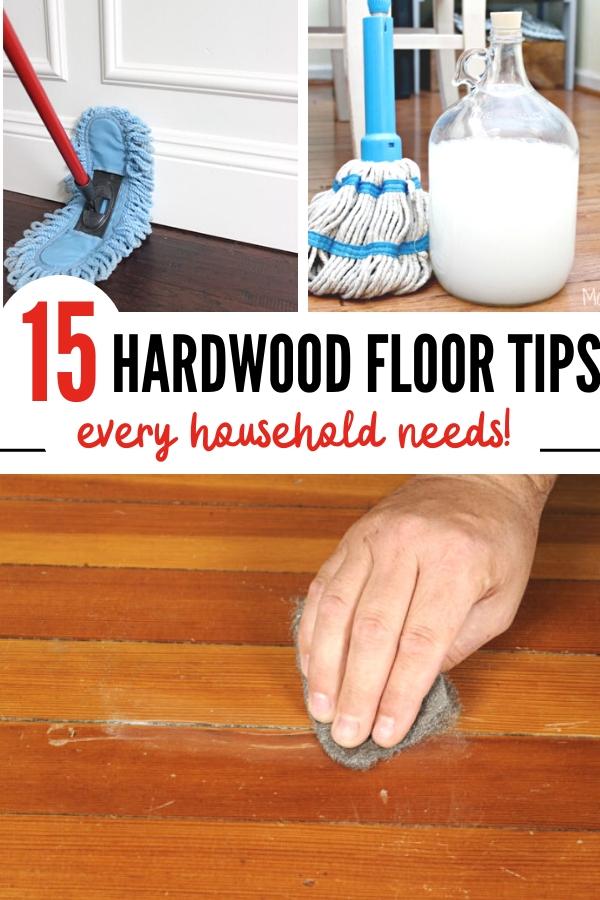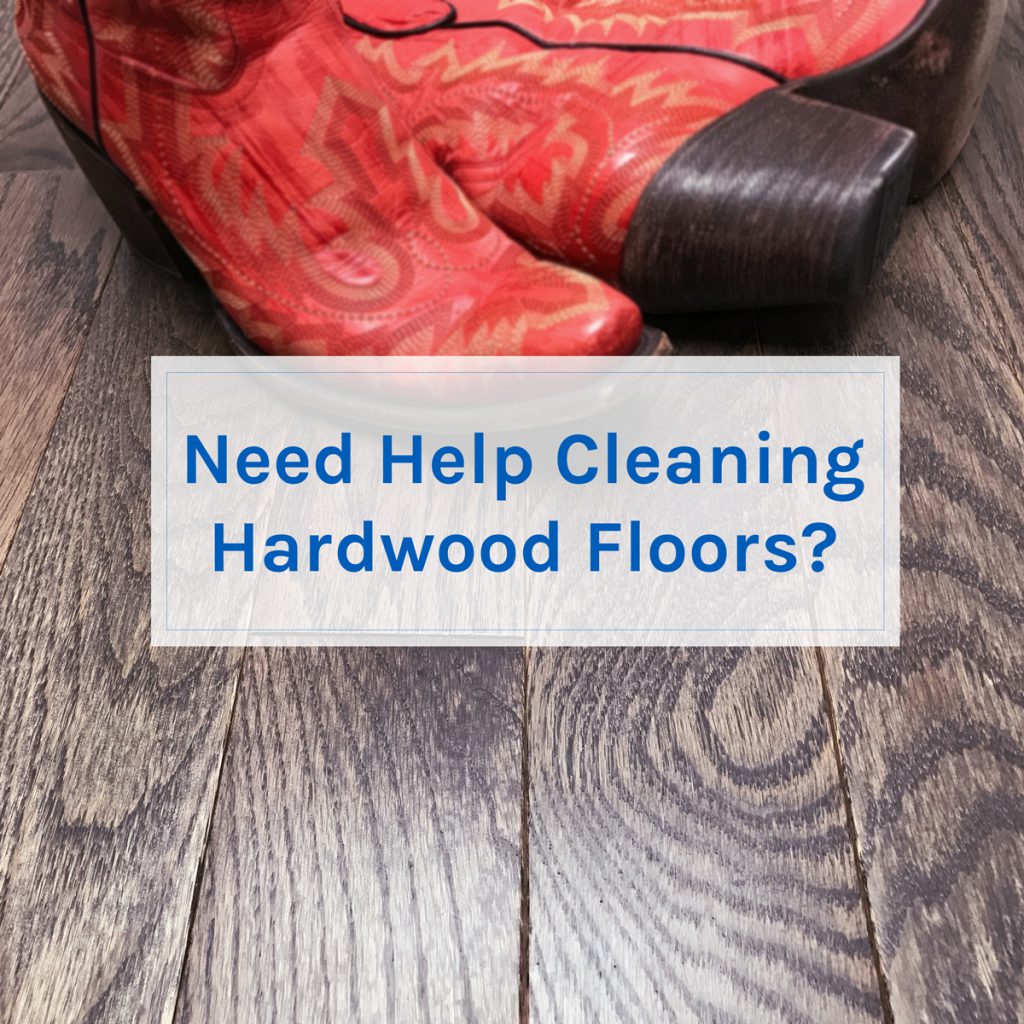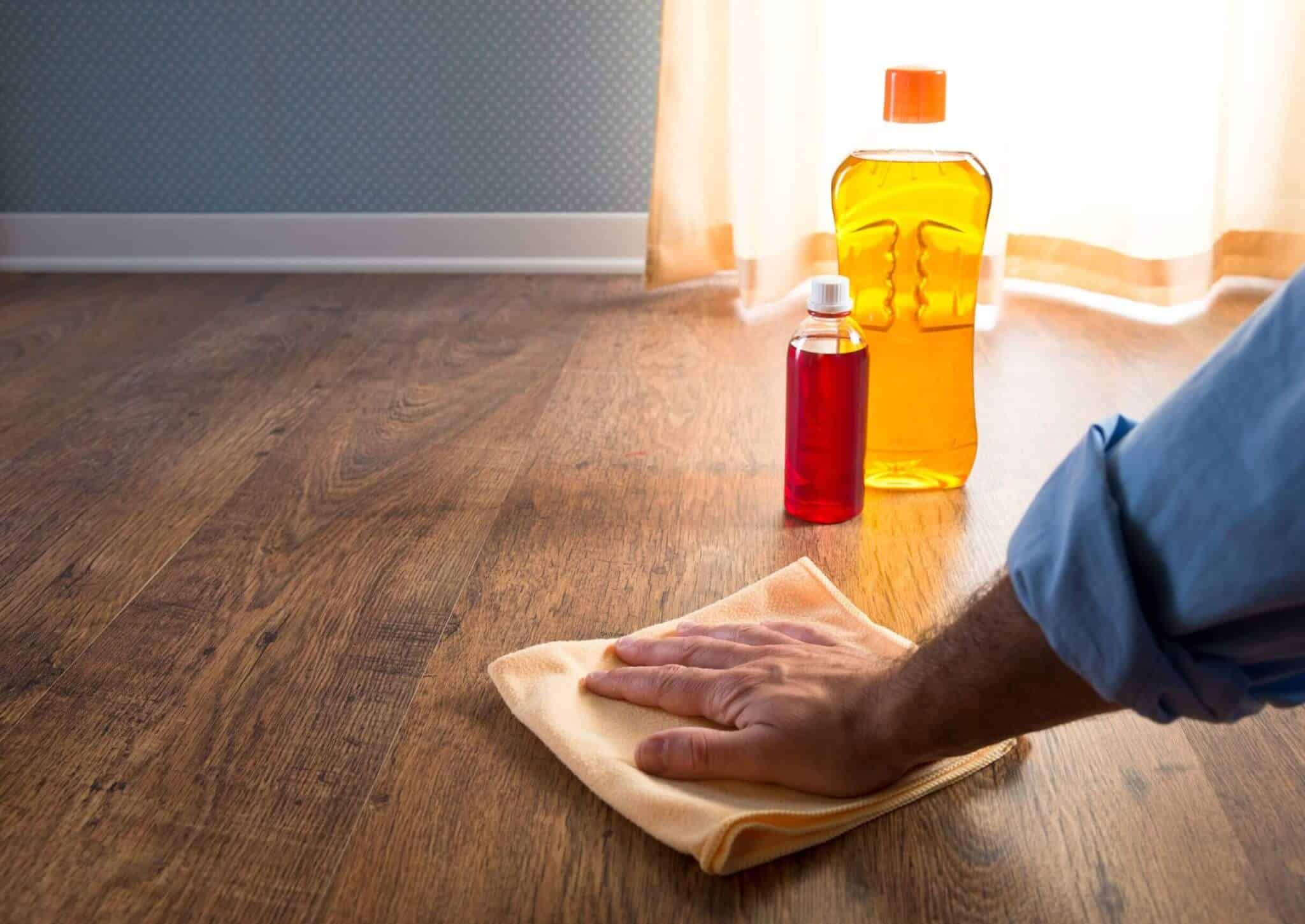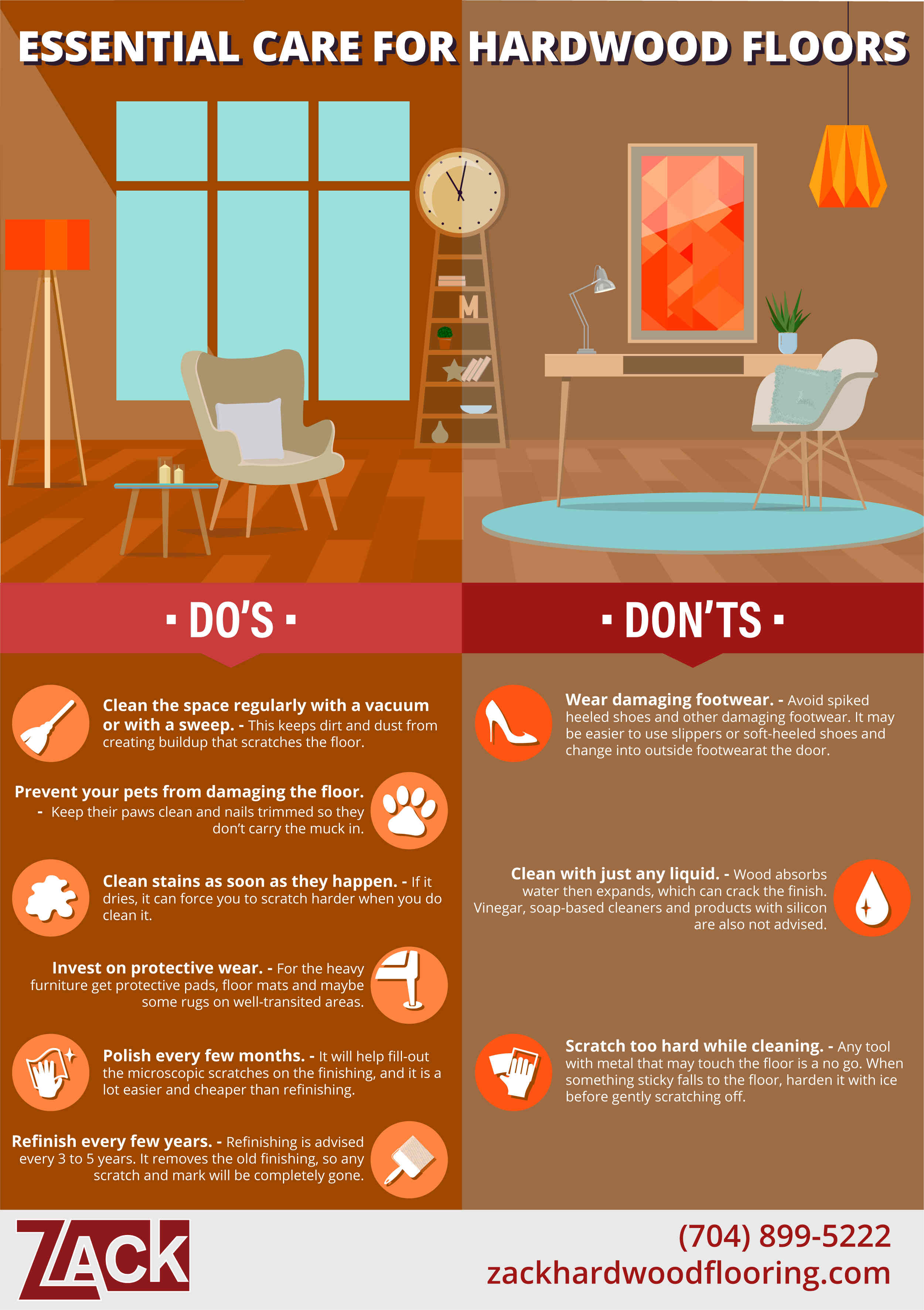Introducing Hardwood Flooring Care
Hardwood flooring adds timeless elegance and value to any home, but maintaining its beauty requires proper care and attention. Understanding the basics of hardwood flooring care ensures that your floors remain in pristine condition for years. Hardwood floors are an investment, and with the right maintenance, they can retain their luster and charm, enhancing the aesthetic appeal of your home.
Regular maintenance of hardwood floors involves both daily and periodic tasks. Daily care includes sweeping or vacuuming to remove dust and debris that can scratch the surface. Periodic maintenance involves deeper cleaning and refinishing to restore the floor’s shine and protect it from wear and tear. By incorporating these tasks into your routine, you can prevent damage and extend the life of your hardwood flooring.
Environmental factors such as humidity and temperature play a significant role in the longevity of hardwood floors. Wood is a natural material that expands and contracts with changes in humidity. Maintaining a stable indoor climate helps prevent warping, cracking, and gapping in the flooring. Using a humidifier in the winter and an air conditioner in the summer can help control these environmental factors.
Choosing the right cleaning products is crucial for hardwood floor care. Not all cleaning products are suitable for hardwood, and some can damage the finish or even the wood itself. Always use products specifically designed for hardwood floors, and avoid harsh chemicals, abrasives, and excessive water. Understanding the proper cleaning methods and products ensures that your floors remain in top condition.
Protecting your hardwood floors from furniture, pets, and high-traffic areas is another essential aspect of care. Using area rugs, felt pads, and pet-friendly grooming practices can prevent scratches and dents. Additionally, implementing a no-shoes policy or using doormats at entryways can reduce the amount of dirt and grit that comes into contact with the floors, preserving their finish and appearance.
Last, knowing when to seek professional help for your hardwood floors is important. While many maintenance tasks can be handled by homeowners, some situations require the expertise of a professional. For instance, refinishing and repairing deep scratches or damage should be left to those with the proper tools and experience. Professional care can rejuvenate your floors and address issues that regular maintenance cannot.

Daily Maintenance Practices
Daily maintenance is the cornerstone of hardwood floor care. Consistent cleaning practices prevent dirt and debris from accumulating and scratching the surface. One of the simplest yet most effective ways to maintain your hardwood floors daily is by sweeping or vacuuming. Using a soft-bristle broom or a vacuum cleaner with a hardwood floor attachment ensures that dust and dirt are removed without damaging the floor.
In addition to sweeping, using a microfiber mop for dusting can help capture finer particles that a broom might miss. Microfiber is gentle on the surface and can attract dust and dirt effectively. Regular dusting keeps the floor looking clean and reduces the risk of scratches caused by abrasive particles. It’s advisable to dust mop the floor at least once a day, especially in high-traffic areas.
Spills and stains should be addressed immediately to prevent damage to the hardwood. Water and other liquids can seep into the wood, causing stains, warping, and other damage. Use a soft cloth to blot the spill and then clean the area with a damp (not wet) cloth. For sticky or stubborn spills, a mild hardwood floor cleaner can be used, but ensure it’s safe for your floor’s finish.
Preventative measures are also a key part of daily maintenance. Placing mats or rugs at entryways can trap dirt and moisture before they reach your hardwood floors. Choose rugs without rubber or vinyl backing, as these can trap moisture and damage the floor. Regularly shaking out or vacuuming these rugs ensures they continue to provide effective protection.
Furniture pads are another essential tool in protecting your hardwood floors. Placing felt pads under the legs of furniture prevents scratches and dents caused by movement. Regularly check and replace these pads as they can wear out over time. Additionally, avoid dragging heavy furniture across the floor; lift and move it to prevent damage.
Implementing a no-shoes policy or using house slippers can significantly reduce the amount of dirt and grit tracked onto your hardwood floors. Shoes, especially high heels or those with hard soles, can scratch and dent the wood. Providing a shoe rack or storage area near the entrance can encourage family members and guests to remove their shoes upon entering.
Periodic Deep Cleaning
While daily maintenance is crucial, periodic deep cleaning helps maintain the luster and longevity of hardwood floors. Deep cleaning involves more thorough methods to remove embedded dirt and grime that regular sweeping or mopping might miss. It’s recommended to deep clean hardwood floors every one to three months, depending on the level of traffic and wear.
To begin a deep clean, start by thoroughly vacuuming the floor to remove loose dirt and debris. Use a vacuum with a hardwood floor attachment to avoid scratching the surface. Pay special attention to corners and edges where dust and dirt can accumulate. This initial step ensures that the floor is free of abrasive particles before proceeding with the cleaning process.
After vacuuming, use a damp (not wet) mop with a hardwood floor cleaner to remove grime. It’s important to use a cleaner specifically designed for hardwood floors, as other cleaners can damage the finish. Avoid soaking the mop; excess water can seep into the wood and cause damage. Mop the floor in sections, making sure to wring out the mop frequently to avoid water pooling on the floor.
For stubborn stains or spots, a soft cloth and a small amount of hardwood floor cleaner can be used. Gently rub the stain, being careful not to scrub too hard and damage the finish. For sticky residues, such as wax or gum, use ice to harden the substance and then gently scrape it off with a plastic scraper. Always follow up with a damp cloth to remove any remaining residue.
Buffing the floor after deep cleaning can help restore its shine. Use a clean, dry microfiber cloth or a floor buffer with a soft pad to buff the floor. This process removes any remaining cleaner residue and helps enhance the floor’s natural luster. Buffing also smooths out minor scratches and imperfections, giving the floor a polished appearance.
Periodically, it may be necessary to reapply a protective finish to the hardwood floor. Over time, the finish can wear down, leaving the wood vulnerable to damage. A hardwood floor polish or wax can help restore the protective layer and add shine. Always follow the manufacturer’s instructions when applying these products, and ensure the floor is thoroughly clean before application.
Finally, consider scheduling professional deep cleaning and maintenance services annually. Professionals have the tools and expertise to thoroughly clean and protect your hardwood floors. They can also identify and address issues that may not be visible to the untrained eye, ensuring that your floors remain in top condition for years to come.
Protecting Against Furniture and Foot Traffic
Hardwood floors can suffer significant wear and tear from furniture and foot traffic if not properly protected. One of the most effective ways to protect against scratches and dents is by using felt pads under furniture legs. These pads provide a cushion between the furniture and the floor, preventing direct contact and reducing the risk of damage. Regularly check and replace these pads as they can wear out or become detached over time.
Area rugs and runners are excellent tools for protecting high-traffic areas. Placing rugs in entryways, hallways, and other frequently used areas can help prevent dirt and grit from being tracked onto the hardwood floors. Rugs also provide a barrier against scratches and scuffs caused by foot traffic. Choose rugs with non-slip backings to prevent them from moving and potentially causing accidents.
High heels and certain types of footwear can cause significant damage to hardwood floors. Implementing a no-shoes policy can prevent these issues. If a no-shoes policy is not practical, consider placing shoe racks or storage areas near entrances to encourage family members and guests to remove their shoes upon entering. Providing slippers or indoor shoes can also help reduce the risk of damage.
Pets can be another source of scratches and damage to hardwood floors. Keeping pet nails trimmed can prevent scratches caused by claws. Regular grooming and using pet-friendly mats in areas where pets frequently rest or play can also help protect the floors. Additionally, training pets to use specific areas for eating and drinking can reduce the risk of spills and stains.
Rearranging furniture periodically can help distribute wear and prevent deep dents or scratches in specific areas. When moving furniture, always lift rather than drag it to avoid damaging the floor. For larger pieces, consider using furniture sliders or moving blankets to protect the floor. These precautions ensure that the weight and movement of furniture do not cause lasting damage.
Last, using floor protectors for heavy appliances or furniture that must remain in place can prevent dents and scratches. These protectors distribute the weight more evenly, reducing the pressure on the hardwood floor. For example, placing protectors under the feet of a refrigerator or piano can help prevent deep indentations and keep the floor looking new.
Managing Humidity and Temperature
Maintaining the right humidity and temperature levels is crucial for the health of hardwood floors. Wood is a natural material that reacts to changes in its environment, expanding and contracting with fluctuations in humidity and temperature. These changes can lead to issues such as warping, cracking, and gapping if not properly managed.
To prevent these problems, aim to keep indoor humidity levels between 30% and 50%. During winter months, indoor air tends to be dry, which can cause hardwood floors to contract and create gaps. Using a humidifier can add moisture to the air, helping to maintain a stable humidity level. Conversely, in summer, high humidity can cause the wood to expand, potentially leading to warping. Using an air conditioner or dehumidifier can help control excess moisture in the air.
Monitoring indoor humidity levels with a hygrometer is an effective way to ensure they remain within the ideal range. These devices are inexpensive and provide accurate readings of the humidity in your home. Placing hygrometers in different rooms can give you a comprehensive view of the indoor climate and help you take action when levels fluctuate.
Temperature also plays a role in the condition of hardwood floors. Sudden changes in temperature can cause the wood to expand or contract rapidly, leading to damage. Keeping indoor temperatures consistent, ideally between 60°F and 80°F, helps minimize these effects. Avoid placing hardwood floors in areas with extreme temperature variations, such as unheated basements or sunrooms.
Proper ventilation is another key factor in managing humidity and temperature. Good airflow helps regulate indoor climate and prevents moisture buildup that can damage hardwood floors. Use exhaust fans in kitchens and bathrooms to reduce humidity from cooking and showering. Ensuring that your home is well-ventilated can significantly contribute to the longevity of your hardwood flooring.
Lastly, installing hardwood floors in areas prone to moisture, such as bathrooms and kitchens, requires special considerations. Using moisture barriers and selecting hardwood with higher dimensional stability can help mitigate the risks associated with these environments. Regularly check for leaks and spills in these areas and address them promptly to prevent water damage.
Choosing the Right Cleaning Products
Using the right cleaning products is essential for maintaining the beauty and integrity of hardwood floors. Not all cleaning products are suitable for hardwood, and some can even cause damage. Understanding which products to use and which to avoid ensures that your floors remain in excellent condition without compromising their finish or structure.
One of the safest and most effective cleaning solutions for hardwood floors is a mixture of water and a few drops of mild dish soap. This solution is gentle enough to clean the floors without damaging the finish. Always use a damp, not wet, mop to avoid excess water seeping into the wood. After mopping, dry the floor with a clean, dry cloth to prevent water damage.
Commercial hardwood floor cleaners are also available and designed specifically for wood surfaces. These products are formulated to clean without leaving residue or damaging the finish. When choosing a commercial cleaner, look for ones labeled as safe for hardwood floors and follow the manufacturer’s instructions for use. Avoid using all-purpose cleaners, as they may contain harsh chemicals that can harm the floor’s finish.
It’s important to avoid using vinegar or ammonia-based cleaners on hardwood floors. While vinegar is often touted as a natural cleaner, its acidic nature can dull the finish over time. Ammonia is also too harsh for hardwood and can damage the surface. Stick to pH-neutral cleaners designed for hardwood to ensure safe and effective cleaning.
Steam cleaners should also be avoided for hardwood floors. The high heat and moisture from steam can penetrate the wood, causing it to swell and warp. Even steam cleaners labeled as safe for hardwood can pose a risk due to the combination of heat and water. Opt for traditional mopping methods with appropriate cleaners to protect your floors.
Regularly maintaining the finish on your hardwood floors can help protect them from dirt and spills. Using a hardwood floor polish or wax can restore the shine and add a protective layer. However, not all finishes are compatible with wax, so check with the manufacturer or a flooring professional before applying any products. Properly maintaining the finish reduces the need for aggressive cleaning and helps keep the floors looking their best.
Professional Hardwood Floor Care
While regular maintenance and cleaning can keep hardwood floors in good condition, professional care is sometimes necessary to address more significant issues or perform tasks that require specialized equipment. Knowing when to seek professional help ensures that your floors receive the best possible care and remain in excellent condition for years to come.
One of the primary reasons to hire a professional is for refinishing hardwood floors. Over time, the finish on hardwood floors can wear down, leading to dullness and increased susceptibility to damage. Professionals have the tools and expertise to sand down the old finish and apply a new one, restoring the floor’s original beauty. This process also allows for the repair of deep scratches and other imperfections.
Deep cleaning and buffing services are another reason to seek professional help. While regular cleaning can remove surface dirt and grime, professionals can perform a more thorough cleaning that reaches deeper into the wood grain. Buffing machines used by professionals can also smooth out minor scratches and imperfections, giving the floor a polished look that is difficult to achieve with regular cleaning methods.
In cases of significant damage, such as deep scratches, gouges, or water damage, professional repairs are often necessary. Attempting to fix these issues yourself can lead to further damage if not done correctly. Professionals have the experience and tools to properly assess and repair damage, ensuring that the repairs blend seamlessly with the rest of the floor.
Installing new hardwood floors or replacing damaged sections also benefits from professional expertise. Proper installation is crucial for the longevity and performance of hardwood floors. Professionals can ensure that the subfloor is adequately prepared, the wood is acclimated, and the installation is done correctly to prevent issues such as warping or gaps.
Regular inspections by a professional can help identify potential problems before they become serious. Professionals can spot signs of wear, damage, or environmental issues that might not be obvious to the untrained eye. Early detection allows for prompt repairs and maintenance, preventing more extensive and costly problems down the road.
Finally, consulting with a professional for advice on care and maintenance can be invaluable. They can provide recommendations on the best cleaning products, methods, and schedules for your specific type of hardwood floor. Their expertise can help you develop a maintenance routine that keeps your floors in top condition and extends their lifespan.
Common Mistakes to Avoid
Skipping Regular Cleaning
One of the most common mistakes in hardwood floor care is neglecting regular cleaning. Allowing dirt and debris to accumulate can lead to scratches and dullness. Make it a habit to sweep or vacuum your floors daily to remove particles that can cause damage. Regular cleaning prevents buildup that can become more difficult to remove over time.
Using Incorrect Cleaning Products
Using the wrong cleaning products can damage the finish on your hardwood floors. Avoid all-purpose cleaners, vinegar, ammonia, and steam cleaners, as they can harm the wood and its finish. Stick to cleaners specifically designed for hardwood floors and follow the manufacturer’s instructions. This ensures that the products you use are safe and effective.
Ignoring Environmental Factors
Failing to manage humidity and temperature levels can lead to significant damage to hardwood floors. Wood expands and contracts with changes in humidity, which can cause warping, cracking, and gapping. Maintain indoor humidity levels between 30% and 50% and keep temperatures consistent to prevent these issues. Use humidifiers and dehumidifiers as needed.
Neglecting Protective Measures
Not using protective measures such as felt pads, area rugs, and furniture sliders can result in scratches and dents. Placing felt pads under furniture legs and using rugs in high-traffic areas can prevent damage from foot traffic and furniture movement. Implementing these measures helps protect your floors from everyday wear and tear.
Delaying Repairs and Maintenance
Ignoring minor damage or delaying repairs can lead to more significant issues over time. Address scratches, dents, and spills promptly to prevent them from worsening. Regularly check for signs of wear and schedule professional maintenance, such as refinishing or deep cleaning, when needed. Proactive care prevents minor problems from becoming major repairs.
Overlooking Professional Help
Attempting to handle all aspects of hardwood floor care without professional assistance can lead to mistakes and inadequate results. Some tasks, such as refinishing and repairing significant damage, require specialized tools and expertise. Don’t hesitate to seek professional help for tasks beyond regular cleaning and maintenance to ensure the best care for your floors.
How often should I clean my hardwood floors?
Regular cleaning of hardwood floors should be done daily or at least several times a week to remove dust and debris. Sweeping with a soft-bristle broom or vacuuming with a hardwood floor attachment can prevent scratches and buildup. Periodic deep cleaning should be done every one to three months, depending on traffic and wear, to maintain the floor’s luster and cleanliness.
Can I use a steam cleaner on my hardwood floors?
Using a steam cleaner on hardwood floors is not recommended. The high heat and moisture can penetrate the wood, causing it to swell and warp. Even steam cleaners labeled as safe for hardwood can pose risks. It’s best to stick to traditional cleaning methods with damp (not wet) mops and hardwood-specific cleaners to protect your floors.
What should I do if I spill water on my hardwood floor?
If you spill water on your hardwood floor, it’s important to act quickly. Blot the spill with a soft cloth to absorb as much liquid as possible. Then, clean the area with a damp cloth and dry it thoroughly with a clean, dry cloth. Promptly addressing spills prevents water from seeping into the wood and causing damage such as staining, warping, or swelling.
How can I prevent scratches on my hardwood floors?
To prevent scratches on hardwood floors, use felt pads under furniture legs, place area rugs in high-traffic areas, and implement a no-shoes policy indoors. Regularly trim pet nails to avoid scratches from claws. Additionally, avoid dragging heavy furniture across the floor; lift and move it instead. These preventive measures help protect the floor’s surface.
Is it necessary to refinish my hardwood floors, and how often should it be done?
Refinishing hardwood floors is necessary when the finish wears down, showing signs of dullness, scratches, or damage. The frequency depends on the level of traffic and wear but generally ranges from every 7 to 10 years. Regular maintenance and timely refinishing restore the protective layer, enhance the floor’s appearance, and extend its lifespan.
What is the best way to maintain humidity levels for hardwood floors?
Maintaining humidity levels between 30% and 50% is ideal for hardwood floors. During dry winter months, use a humidifier to add moisture to the air and prevent the wood from contracting and creating gaps. In humid summer months, use an air conditioner or dehumidifier to reduce excess moisture and prevent the wood from swelling and warping. Regularly monitor indoor humidity with a hygrometer to ensure stable levels.
Related Posts:









